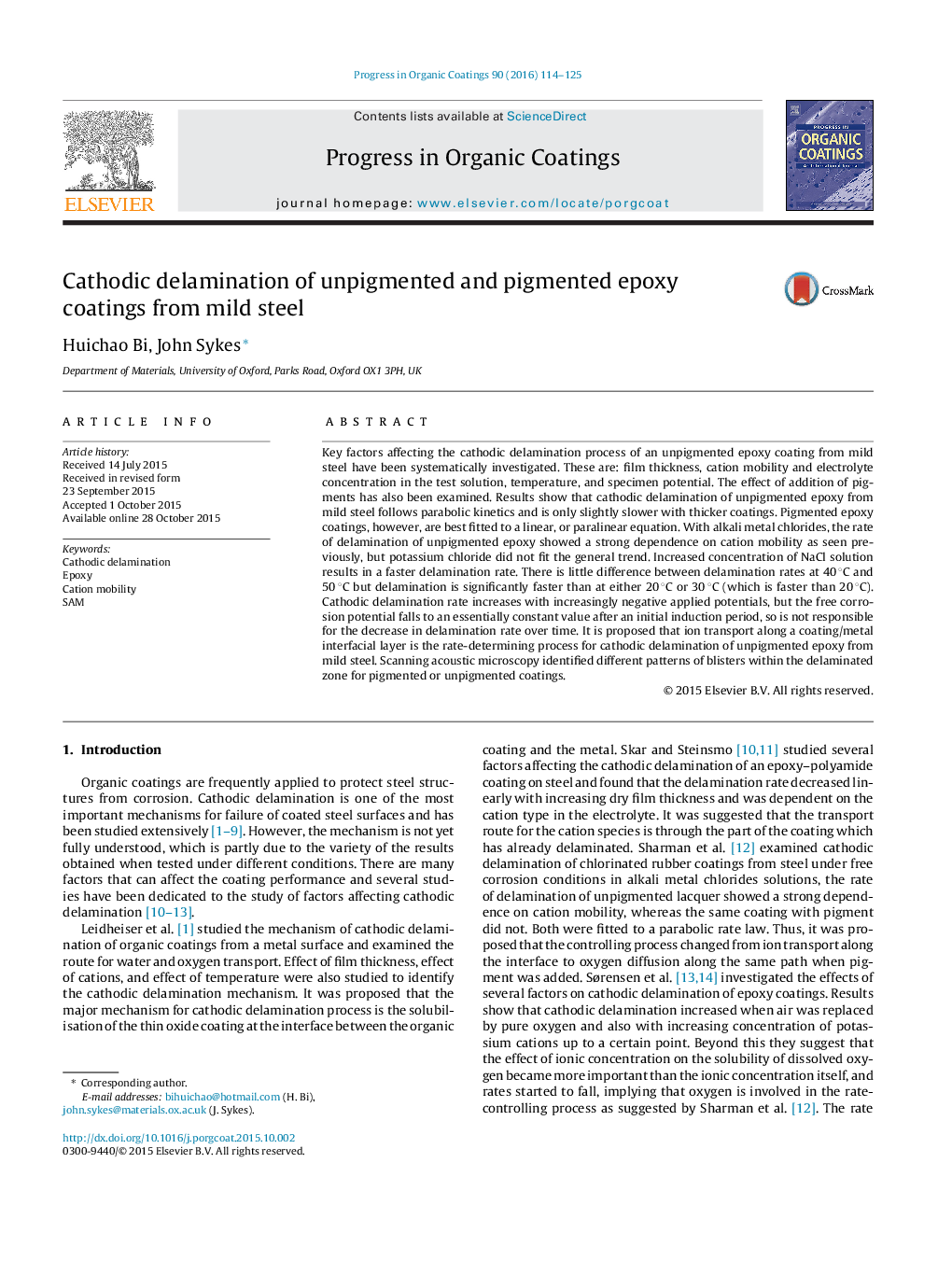| Article ID | Journal | Published Year | Pages | File Type |
|---|---|---|---|---|
| 7106628 | Progress in Organic Coatings | 2016 | 12 Pages |
Abstract
Key factors affecting the cathodic delamination process of an unpigmented epoxy coating from mild steel have been systematically investigated. These are: film thickness, cation mobility and electrolyte concentration in the test solution, temperature, and specimen potential. The effect of addition of pigments has also been examined. Results show that cathodic delamination of unpigmented epoxy from mild steel follows parabolic kinetics and is only slightly slower with thicker coatings. Pigmented epoxy coatings, however, are best fitted to a linear, or paralinear equation. With alkali metal chlorides, the rate of delamination of unpigmented epoxy showed a strong dependence on cation mobility as seen previously, but potassium chloride did not fit the general trend. Increased concentration of NaCl solution results in a faster delamination rate. There is little difference between delamination rates at 40 °C and 50 °C but delamination is significantly faster than at either 20 °C or 30 °C (which is faster than 20 °C). Cathodic delamination rate increases with increasingly negative applied potentials, but the free corrosion potential falls to an essentially constant value after an initial induction period, so is not responsible for the decrease in delamination rate over time. It is proposed that ion transport along a coating/metal interfacial layer is the rate-determining process for cathodic delamination of unpigmented epoxy from mild steel. Scanning acoustic microscopy identified different patterns of blisters within the delaminated zone for pigmented or unpigmented coatings.
Related Topics
Physical Sciences and Engineering
Chemical Engineering
Process Chemistry and Technology
Authors
Huichao Bi, John Sykes,
